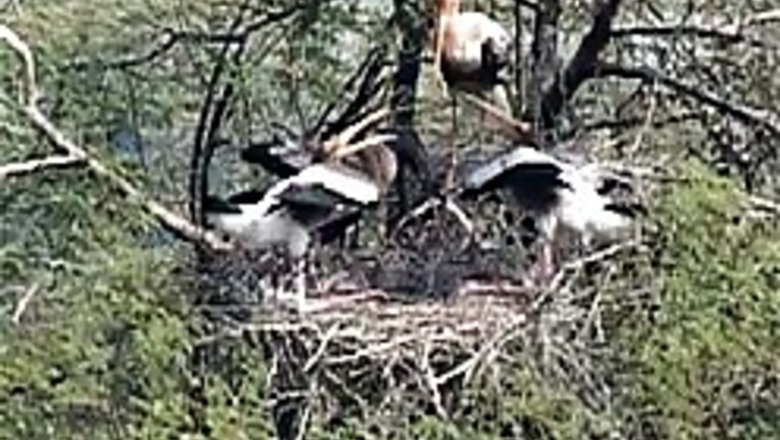
views
Bharatpur: On Tuesday, a visitor interpretation centre was inaugurated at the Keoladeo National Park or the Bharatpur Bird Sanctuary as it is popularly called.
It is a part of the long-term conservation strategy for the park. However, CNN-IBN Correspondent Sindhu Manjesh traveled to Bharatpur and found that the lack of water and steady decline in bird population is affecting tourist inflow and the lives of those who depend on them.
It's lunch hour at the Keoladeo National Park for this flock of painted storks -- winter migrants from Sri Lanka.
Keeping them company are other visitors like grey herons from the Netherlands, pin-tail ducks from Japan and egrets, pond herons and the white ibis from Siberia.
But for the fourth season in a row, the star visitor -- the Siberian crane -- is missing and can be seen only in pictures at the visitor centre.
The latest feature in the battle to save the sanctuary -- the visitor interpretation centre -- is a timely addition and according to experts, is a way to sensitise visitors.
The decline in bird population has led to a dip in tourist numbers as well, affecting the livelihood of the rickshawallahs, who double up as guides. There are 122 rickshawallahs. Some are locals, most are not.
For people like Siyaram, the decline in tourist population is an extremely unpleasant reality.
"A lot of tourists used to come to see the Siberian crane. Now that the crane has stopped coming here for the last four seasons, the tourists populace has declined. I am waiting to get another job and will leave this place as soon as I get one," says he.
Bharatpur is the winter destination for over 300 species of migratory birds. The wetlands draw them here, but successive droughts and water politics have led to a steady drying up of this crucial ecosystem.
Director, Wetlands Programme World Wildlife Fund, Parikshit Gautam says, "The problem with wetlands is that unlike forests, they have not been categorized as conservative areas."
However, there's little progress on solving the immediate problem. The release of water from the Panchana dam is a major issue.
When questioned, the Minister of Forest and Environment, Rajasthan – Laxmi Narayan Dave is quick to pass the buck on.
"We are pressurising the government of India to sort out the water situation here," says he.
There’s clearly a lot of work to be done if paradise has to be regained. It's also critical that all stakeholders are made partners in the preservation project, but that calls for considerable wit and will.













Comments
0 comment